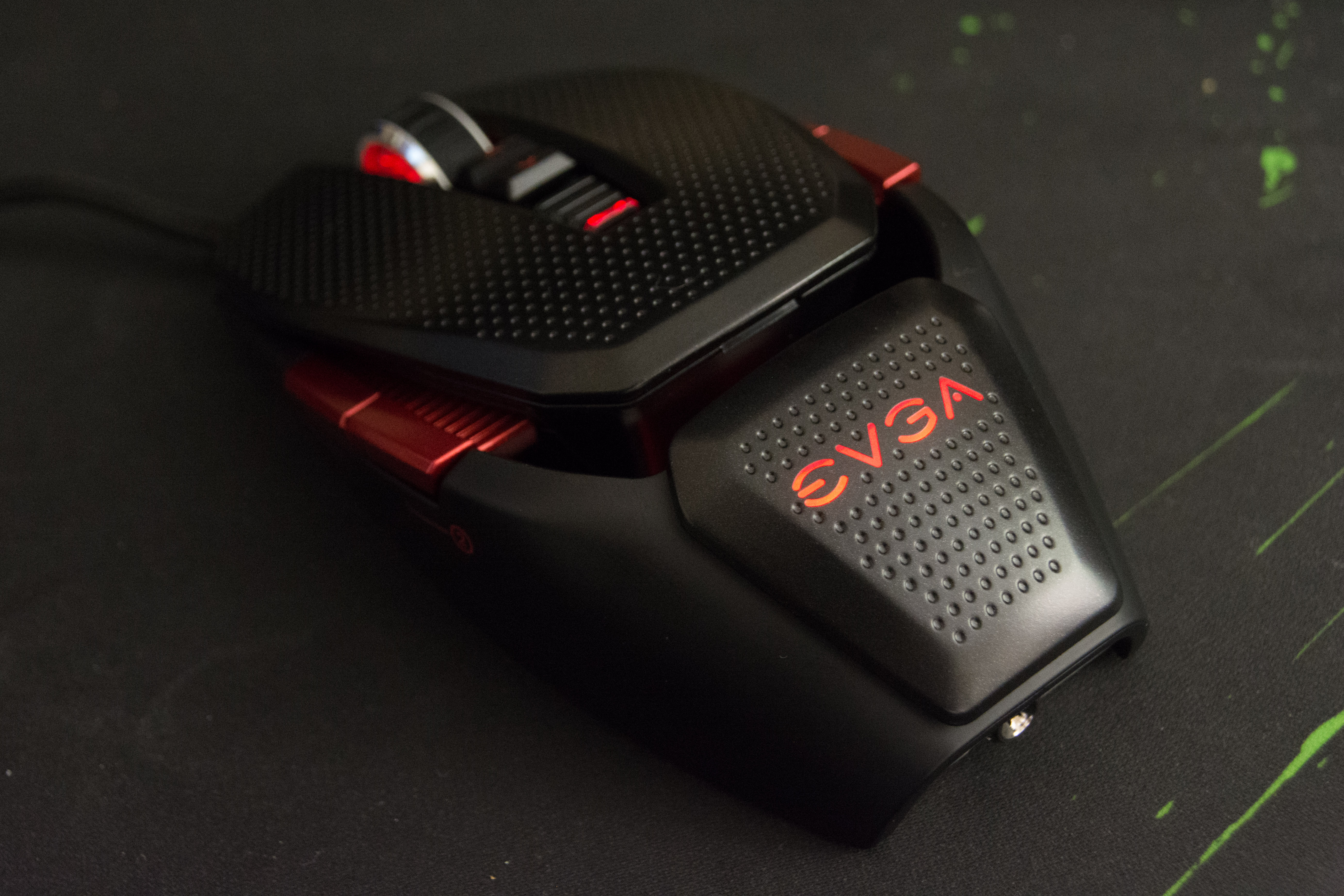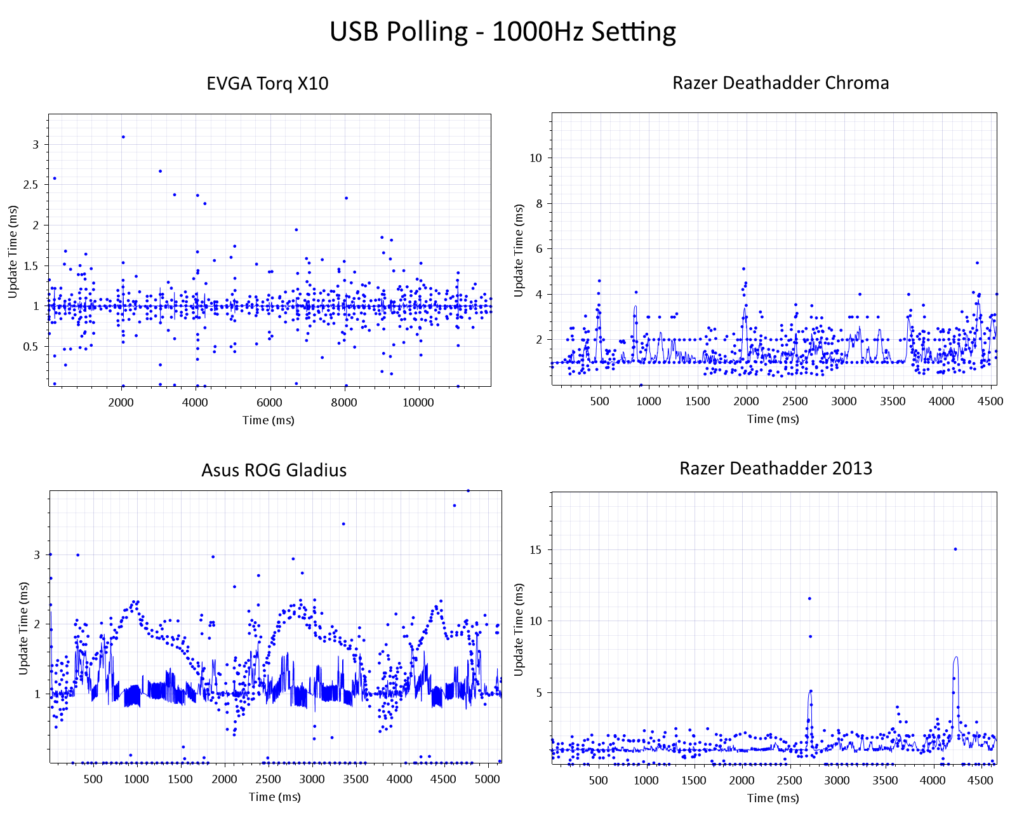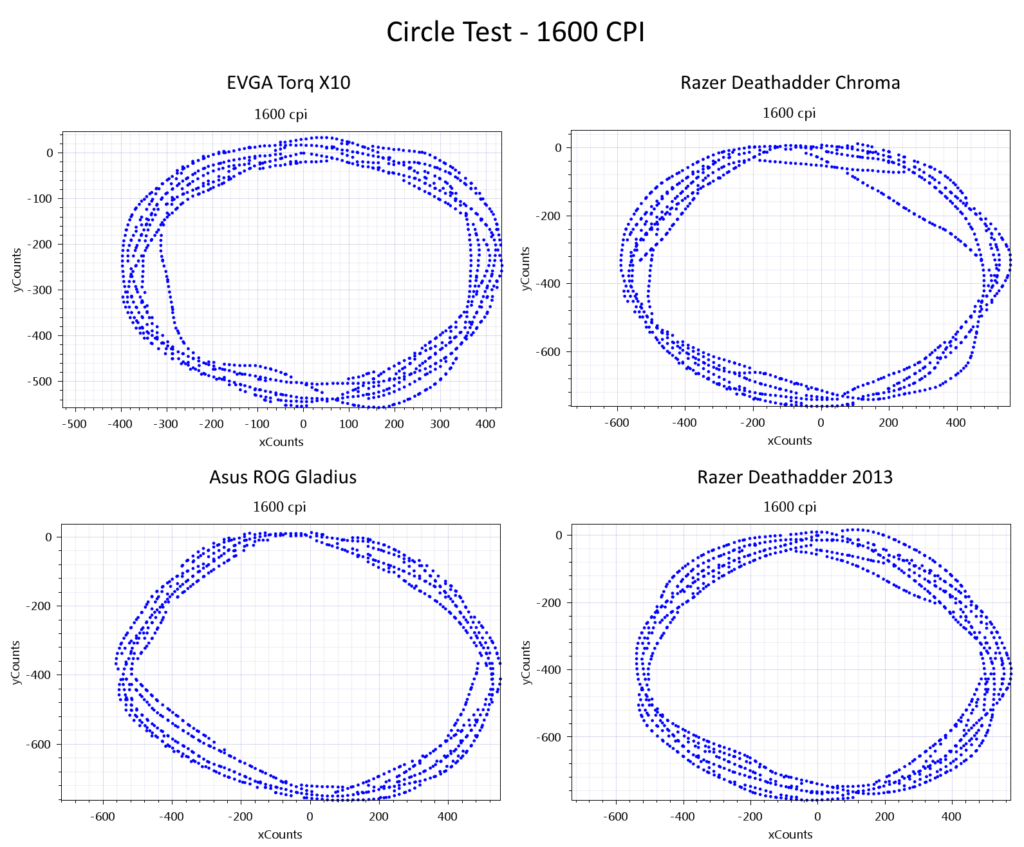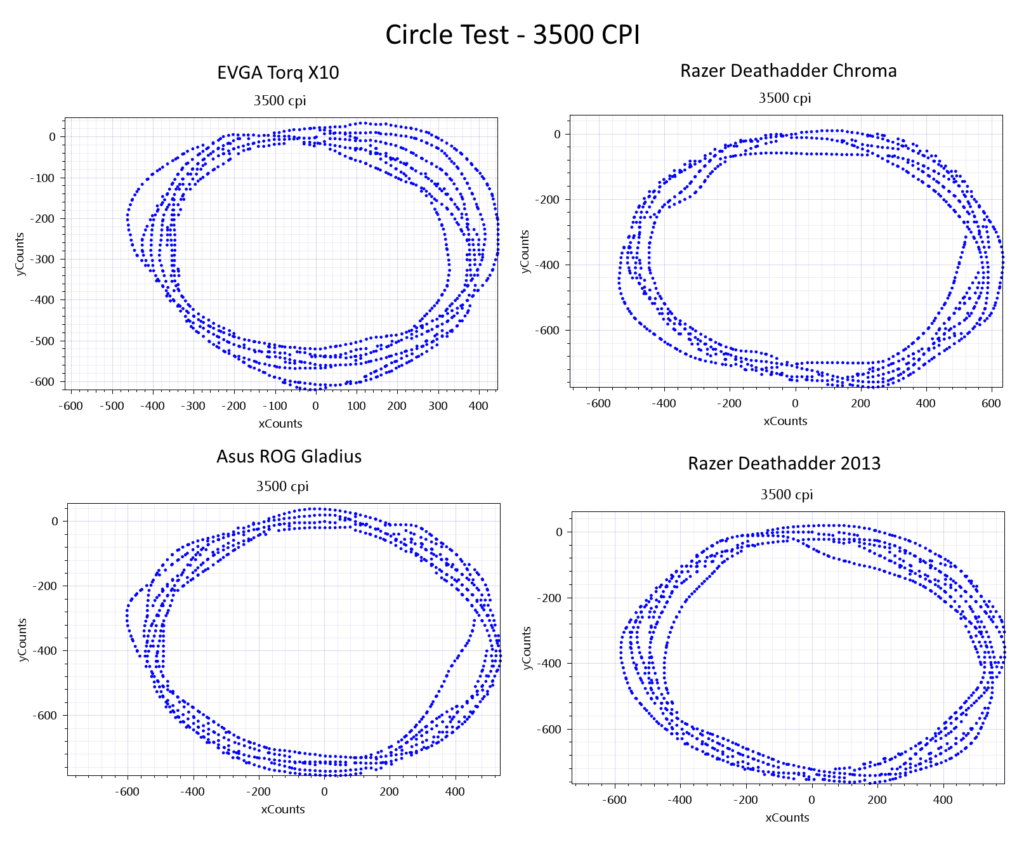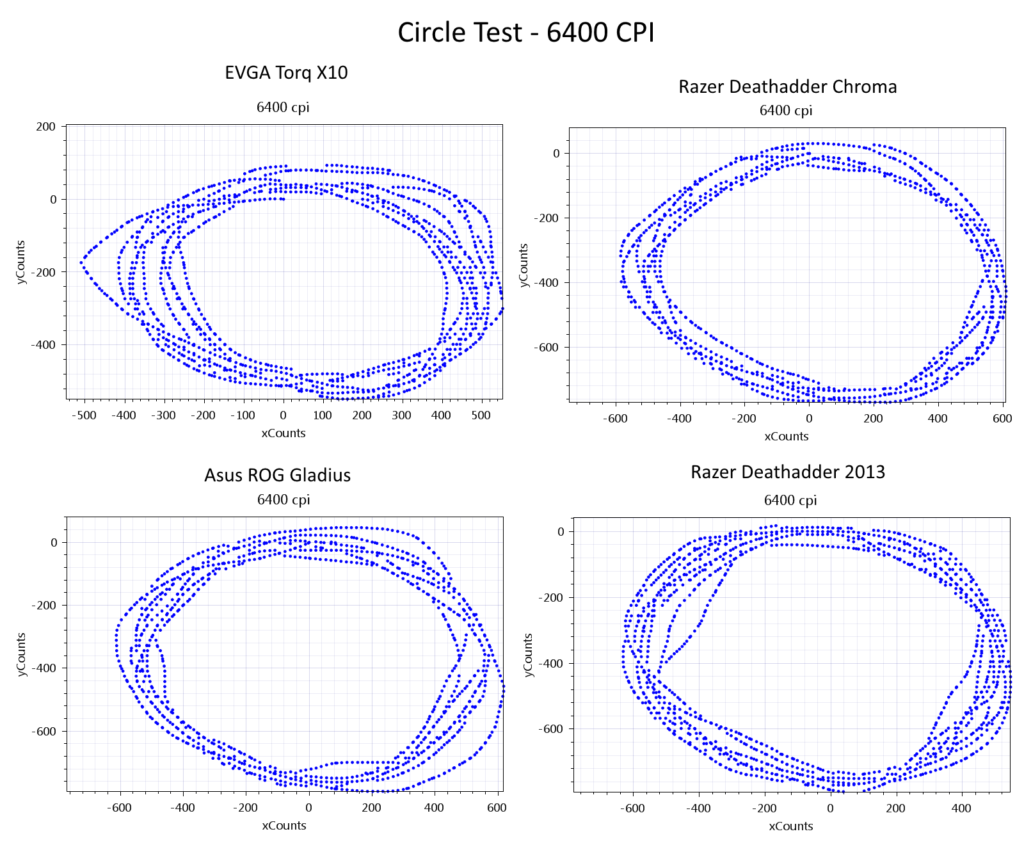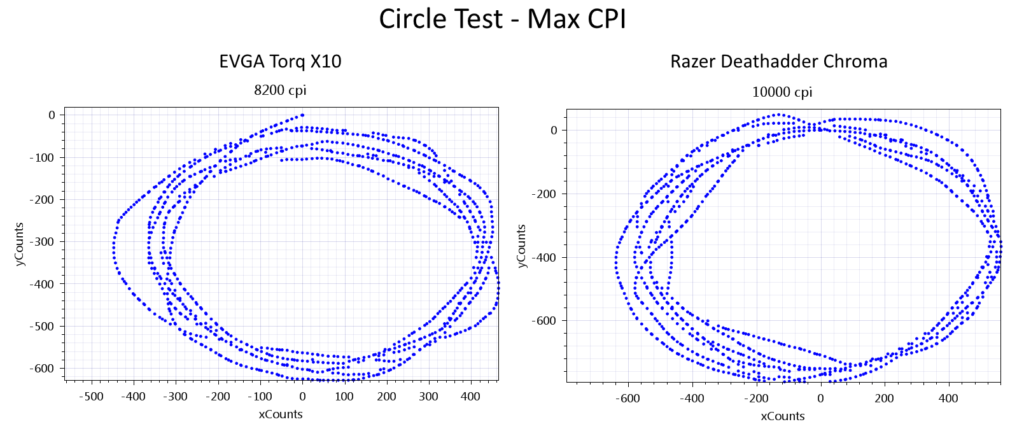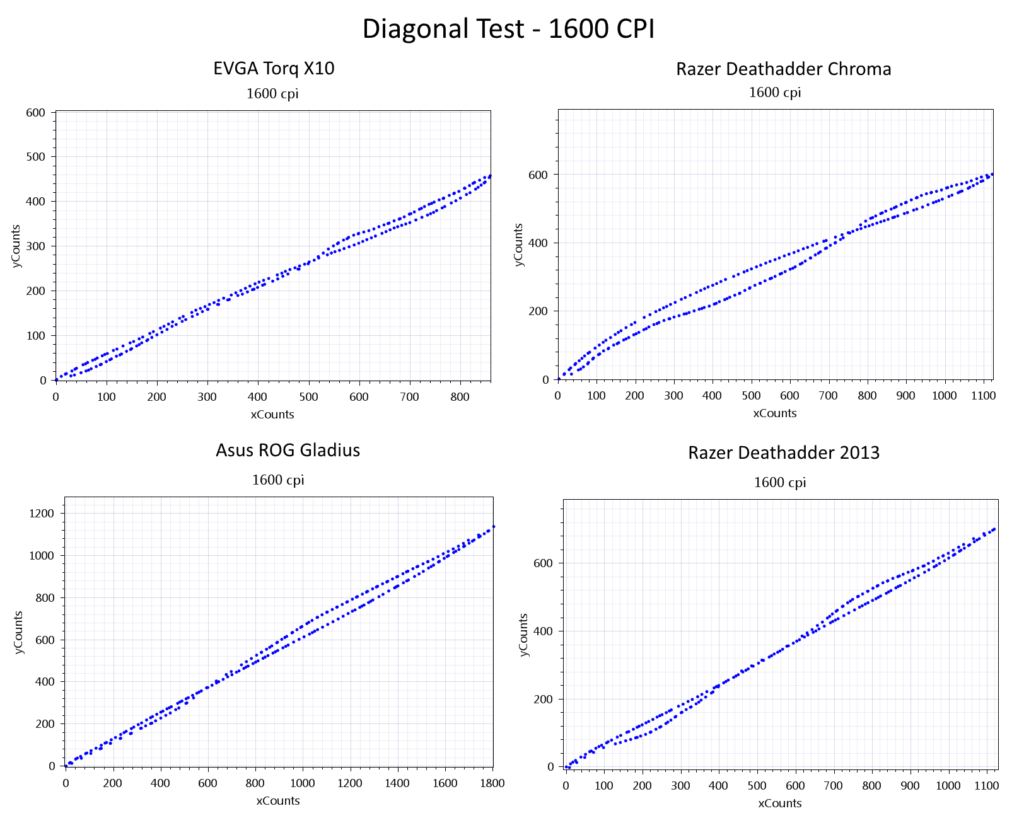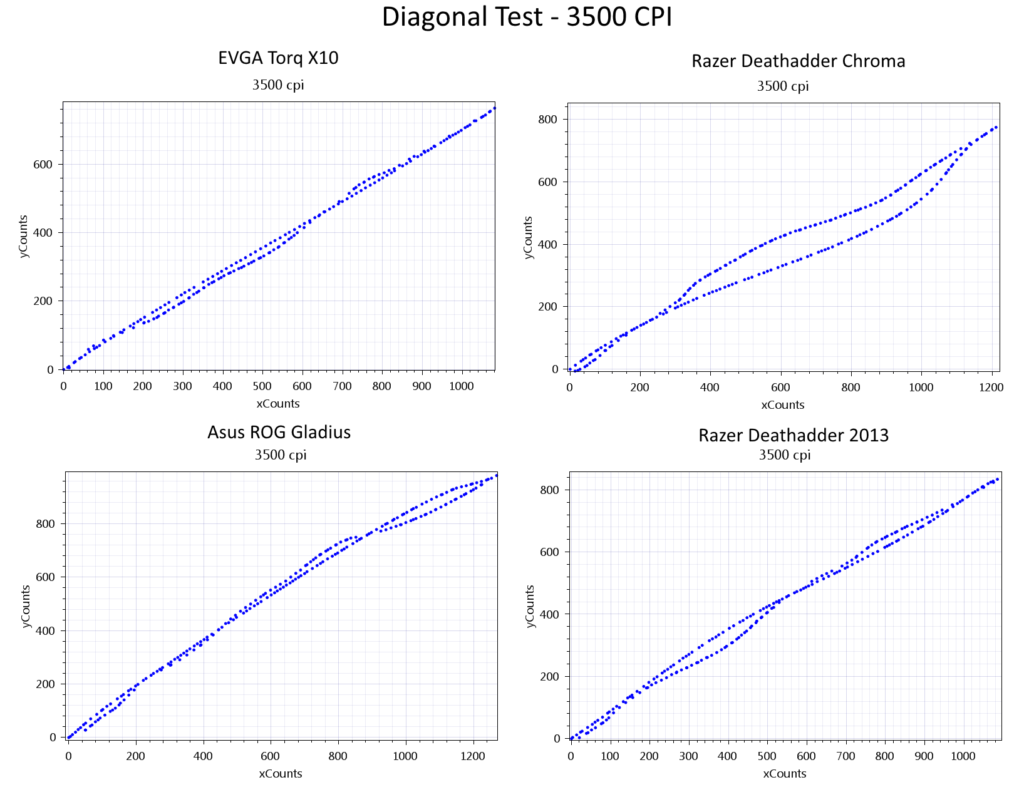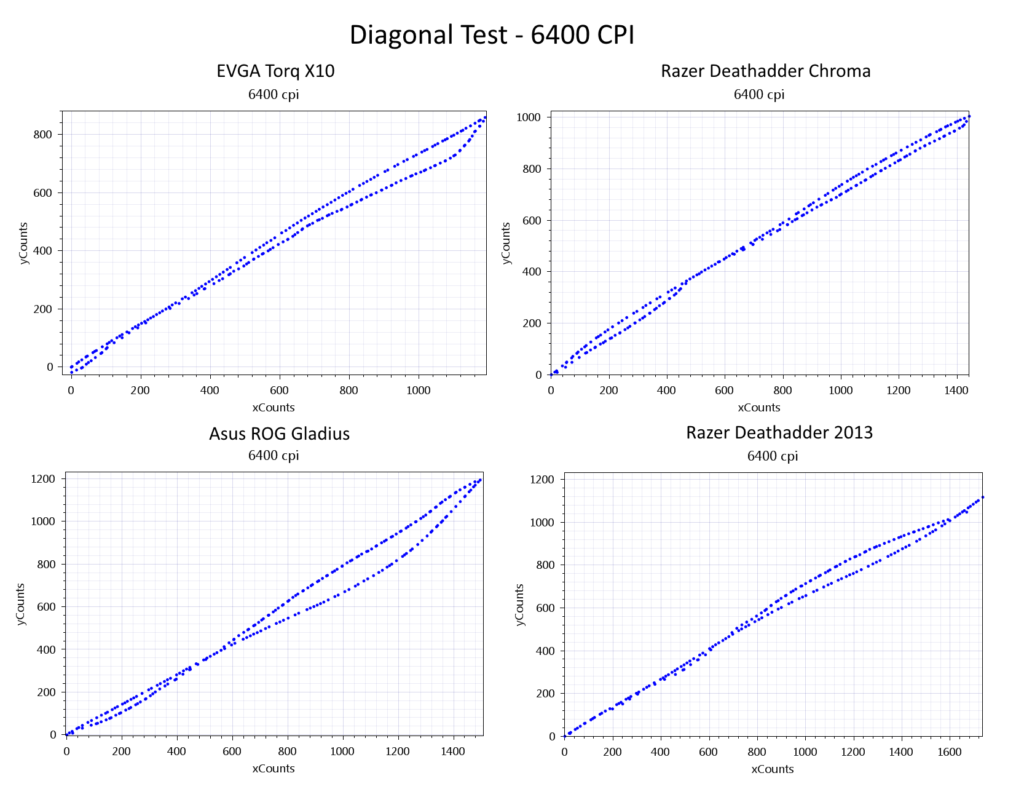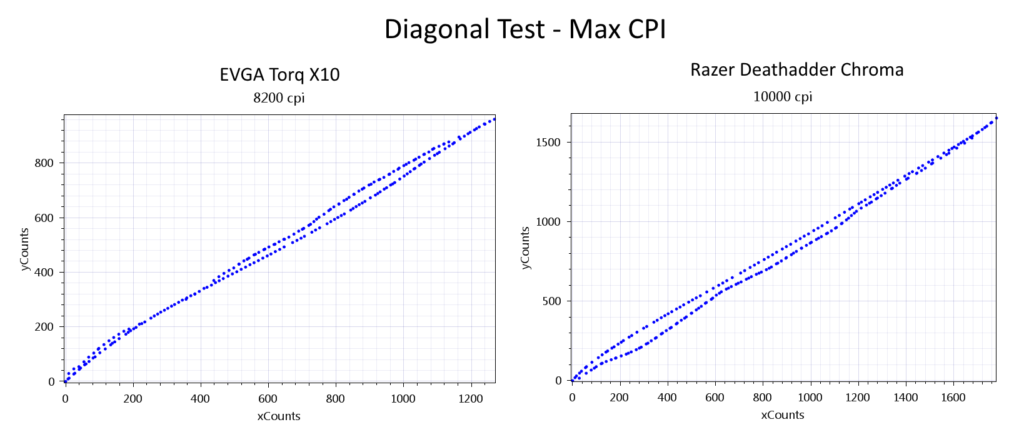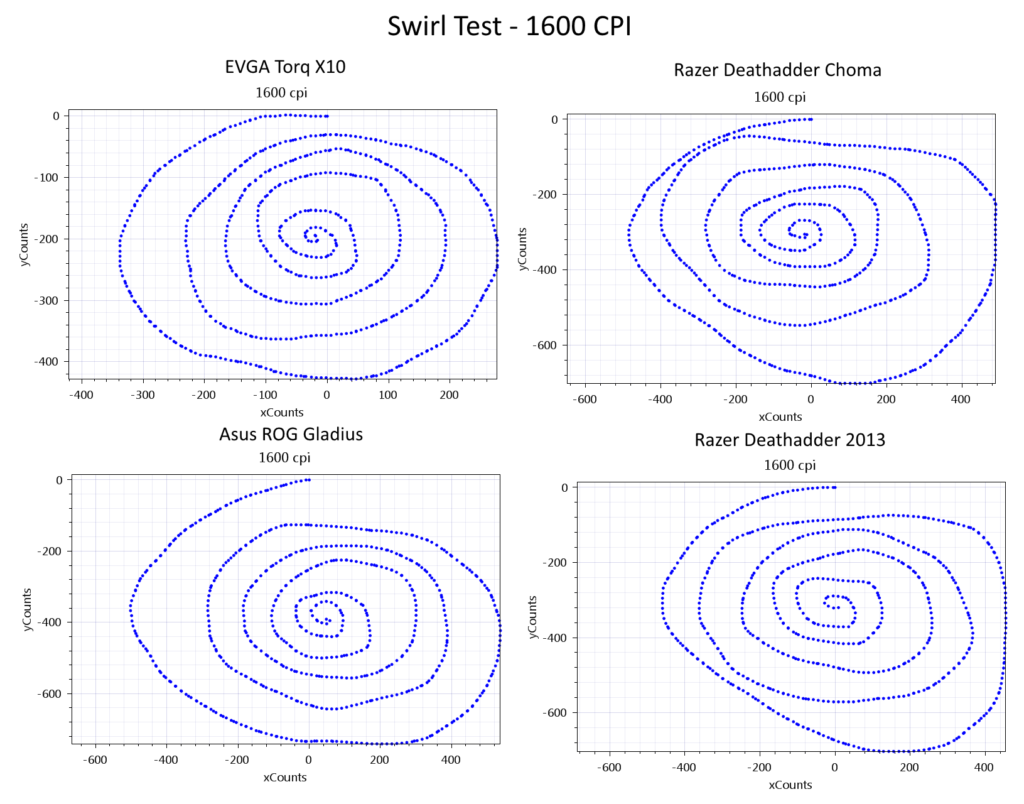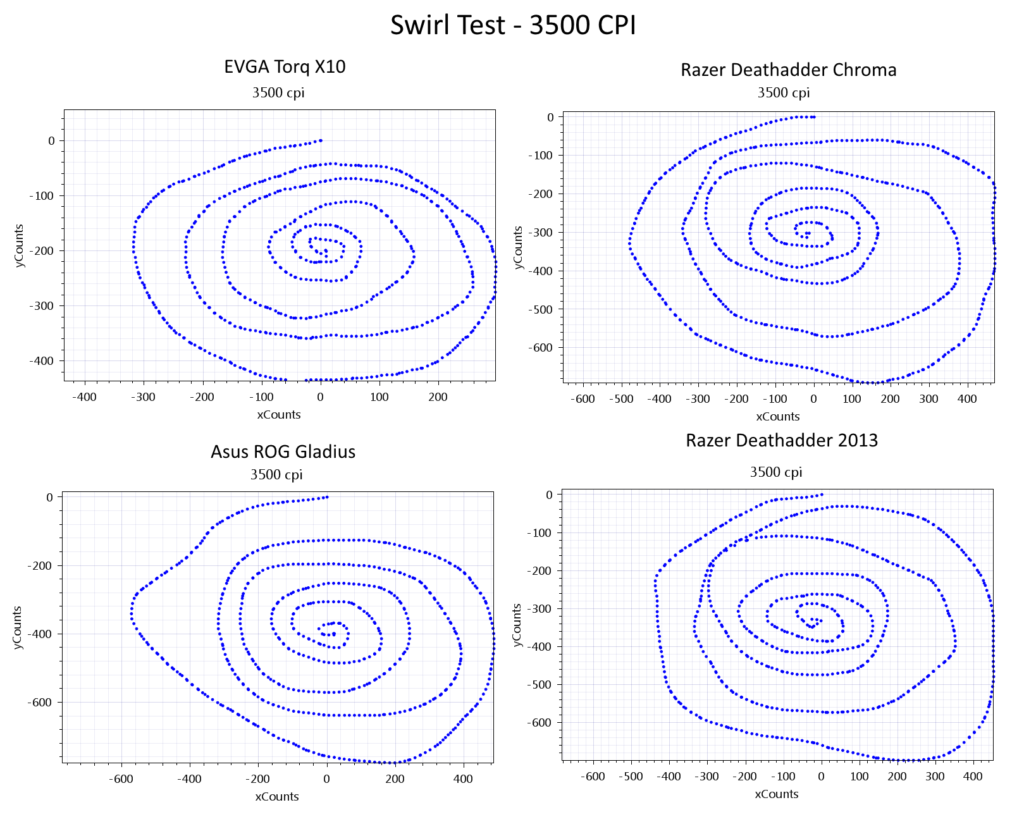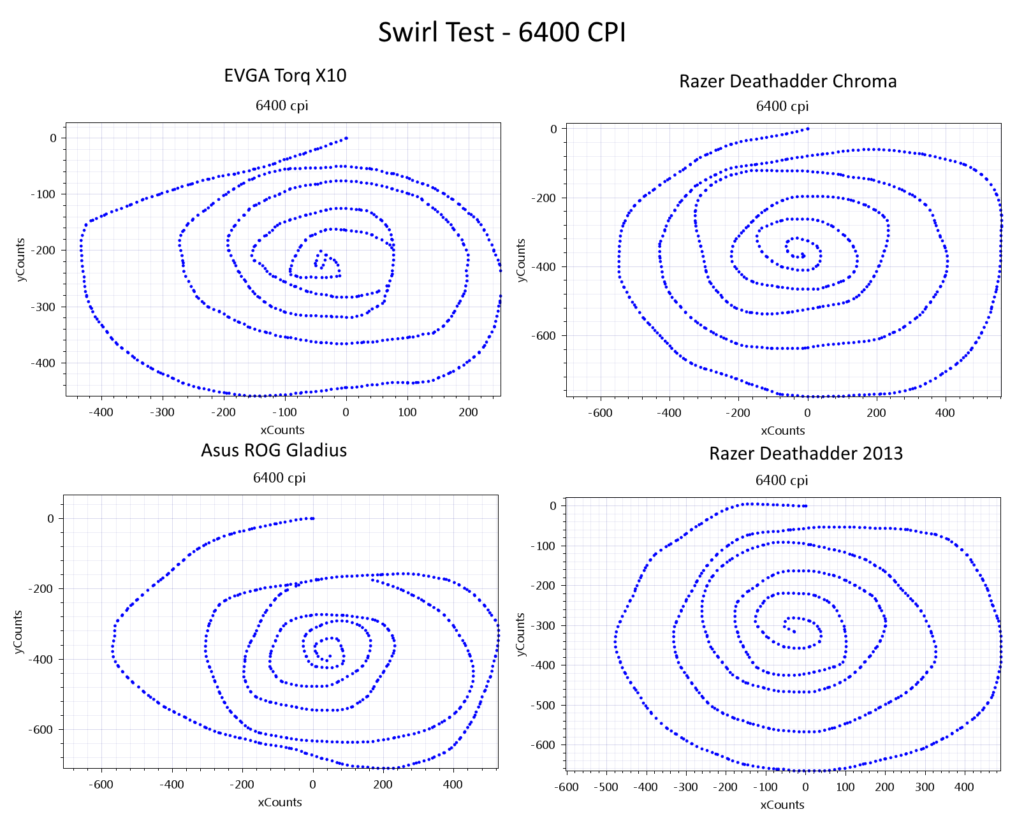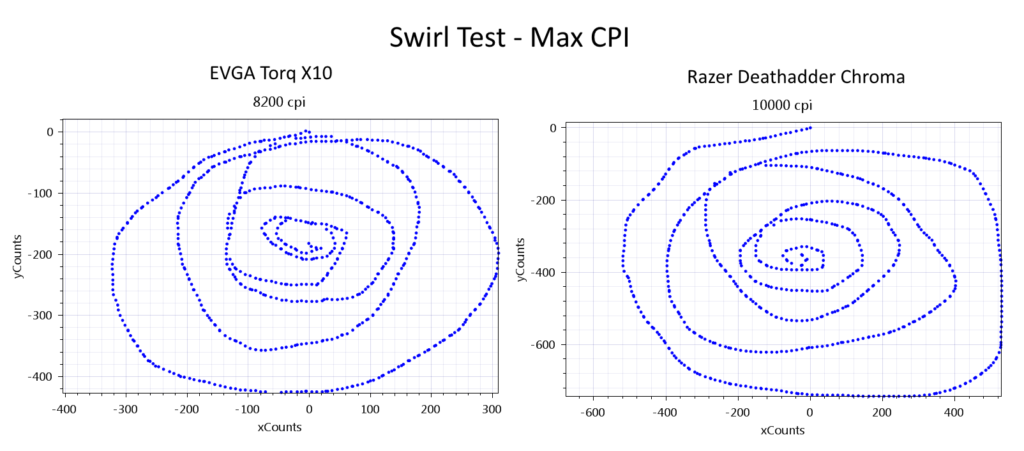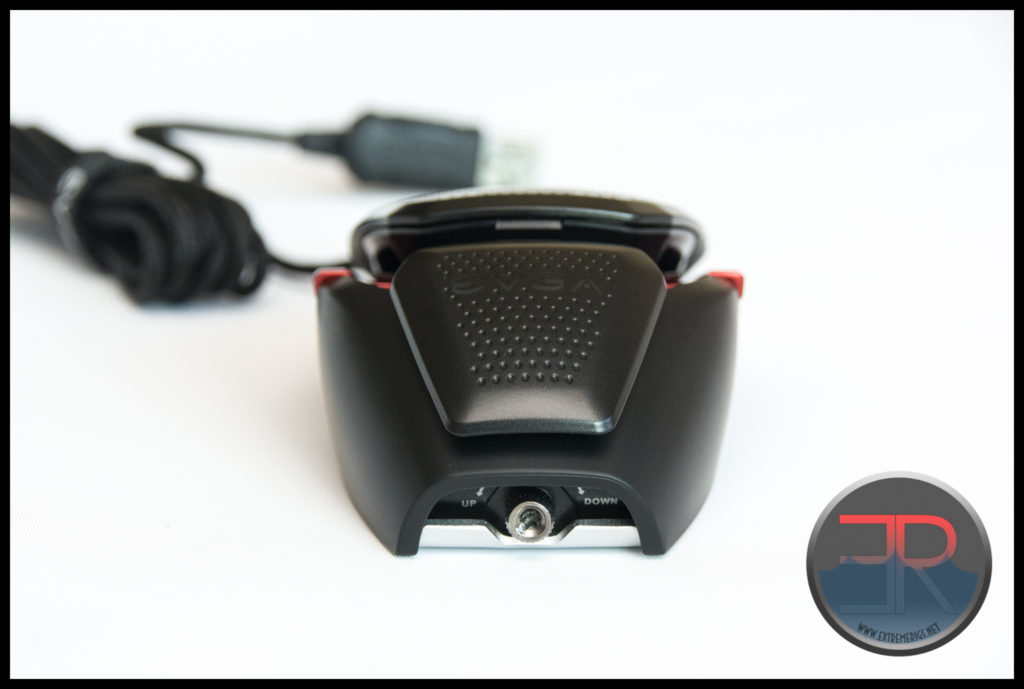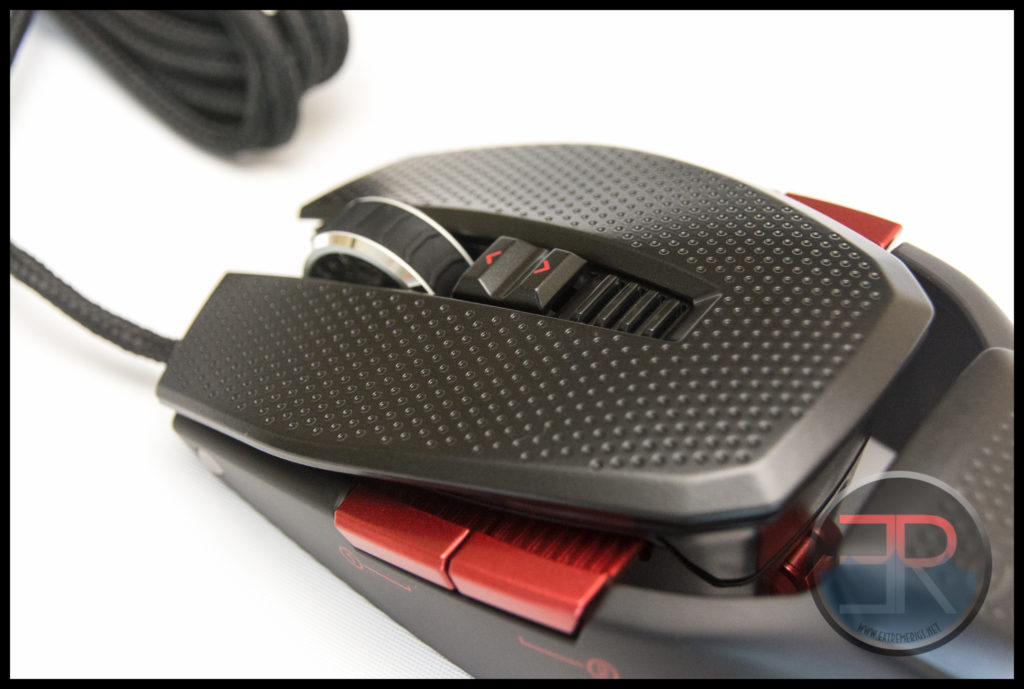Testing
Mouse testing is hard to do well. So the following tests are at best pseudo science. Essentially we move the mouse to follow predetermined patterns and use MouseTest – a program that can log the movement. However the movement of the mouse is subject to the hand/eye coordination of the user. While a machine could be used it would then remove the human interaction element which is of course critical for a component that we touch. For this testing – we used a Razer Goliathus Control mouse pad – one that arguably is designed for standard optical sensors and not laser sensors like this one.
Let’s start off with the USB polling – in EVGA’s software this was set to 1000Hz (1ms) and indeed in testing it seems close enough with possibly less jitter than the competition:
So far so good for the Torq X10.
Let’s now move on to movement based testing. The first test is to repeatedly draw a circle over and over. This test is designed to check that there is no “wandering” due to acceleration of other issues. The circles should not only look circular but have a tight correlation:
At 1600 CPI the results all look similar. They could be all be tighter but of course there is human error. Let’s dial it up to 3500 CPI:
The Torq X10 looks a bit worse here. Although tight in the bottom left quadrant, the top right quadrant seems quite erratic.
Things get worse at 6400 CPI. Lastly let’s check the max CPI above 6400 CPI – settings that only two of our mice on test here can handle:
At max CPI the X10 seems to behave a little better while the Chroma seems to be getting worse. However the test is actually quite hard to even do at 10000 CPI as it requires a fair amount of hand control
Let’s now try the “diagonal” test – this involves a fast diagonal movement to the upper right followed by a slow movement back to the starting point. This will show any acceleration issues as acceleration would be indicated by the cursor not returning to the origin. By default the Torq X10 has acceleration on – it can be disable in a hard to find submenu. For these tests acceleration was turned off.
At 1600CPI everything is as expected.
At 3500 CPI the Torq X10 is fine and surprisingly linear. At this point I had to check that the angle snapping was turned off because my natural diagonal movement isn’t quite as straight. The Chroma however seems to struggle to be as linear as we’d like.
At 6400 CPI everything is still acceptable although the Gladius may be suffering from some acceleration. Max CPI doesn’t show any issues for either the Torq X10 or the Chroma:
The last test is the swirl test – this uses a spiral that starts off large and gets smaller. This shows how well the mouse can handle varying size of movement and can hint at friction issues (particularly a difference in static and moving friction coefficients):
The Torq X10 performs well, while both Deathadders seem to have similarly distorted patterns.
At 3500 CPI the Torq X10 remains good.
At 6400 CPI the X10 seems to be falling apart a bit both for the larger radius turns and the tight ones.
At max CPI this gets worse for both the X10 and the Chroma, but the X10 definitely seemed the worst of the two.
So while there are no acceleration issues, we have seen some interesting performance issues with the Torq X10 at higher CPI settings. The Deathadder Chroma seemed far better at high CPI settings, while the Torq X10 seemed better at lower CPI settings. The Gladius has always seemed happier in the middle of the range.
Subjective Feel
The Torq X10 is a mouse that is a bit “stiff” to get going. In other words it’s coefficient of static friction is significantly higher than it’s coefficient of moving friction. In addition even once moving it feels heavy despite it’s relatively low weight. This I believe is partly due to the large mouse feet. While these provide stability they are just so large that they provide too much friction. I tend to use higher CPI settings in normal use (6400) and struggled to get the detail and accuracy I liked. I frequently had to overcompensate and often felt like I was paying attention and gripping the mouse harder than normal simply to get the cursor where I wanted. I felt I was working my arm more than I normally would and this corresponded to a shorter time to fatigue my wrist. The end result was that after several hours I’d want to put the mouse aside and plug my Deathadder back in.
Beyond the friction issues I also disliked the shape. This is of course a personal issue that may not apply to the reader as everyone is different. However an ergonomic left or right handed mouse will always be more comfortable than an ambidextrous mouse. Despite the ability to customize the arch height, I never felt like my hand was comfortable.







